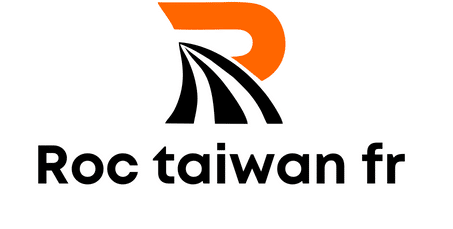How to Quantify the Impact of Public Transport Accessibility on Property Values?

As a property owner, investor, or real estate professional, you may question the impact of public transport access on property values. Is there a direct link? How significant is the impact? How can such a variable be quantified accurately? We will delve into the process of how scholars have addressed this question, using various analytical methods such as spatial analysis, Generalized Method of Moments (GWR), and CrossRef, and the use of Google scholar as a valuable source of further research.
The Relationship between Public Transit and Residential Property Values
Before quantifying the impact of public transport accessibility on property values, it’s essential to understand the relationship between these variables. Theoretically, the proximity of a property to a public transit stop adds convenience for residents, reducing transportation time and cost. This convenience can increase a property’s attractiveness, leading to higher demand and consequently, higher property values.
Lire également : What Are the Best Practices for Retrofitting Historic Buildings for Energy Efficiency?
Statistical data supports this theory. A study published in the Journal of Urban Economics reported a 4.2% increase in housing values for every 1000-foot decrease in distance to a rail station. This pattern is observed across major cities worldwide, suggesting a universal trend. Another cross-sectional analysis across 14 major metropolitan areas in the U.S found that properties within a half-mile of a light rail station experienced an average price premium of 4.4% compared to those outside this radius.
Quantifying the Impact Using Spatial Analysis
One of the primary methods for quantifying the impact of public transport accessibility on housing values is spatial analysis. By examining the geographical distribution of property values and public transit locations, spatial analysis identifies patterns and relationships between these two variables.
Avez-vous vu cela : How to Use Location Intelligence Software to Choose New Real Estate Development Sites?
Spatial analysis involves calculating the distance between each residential property and the nearest public transit stop. These distances are then correlated with the corresponding property values. The correlation coefficients obtained give an indication of how significant the impact of public transit accessibility is on property prices.
Using the GWR method, the spatial relationship between transit accessibility and property values can be quantified. This method allows for the inclusion of other potentially influential variables such as neighborhood characteristics and property attributes, making the analysis more robust.
The Role of Google Scholar and CrossRef in Research
When conducting research on the impact of public transit access on property values, Google Scholar and CrossRef databases are invaluable resources. These databases offer wide access to scholarly articles, theses, books, conference papers, and patents from a myriad of academic publishers, professional societies, online repositories, universities, and other scholarly organizations.
By using specific keywords such as "public transit", "property values", "urban", "residential", "rail", "GWR", "spatial", "CrossRef", "analysis", "coefficients", and "real estate," you can refine your search and identify relevant scholarly works. These works can provide insights into the methods used, the results obtained, and the implications of these results on property owners, investors, and real estate professionals.
Practical Implementation of the Findings
Understanding the impact of public transportation proximity on property values has practical implications in the real estate industry. Investors and developers can use this information to inform their decision-making process. For instance, they may choose to invest in properties near public transit for potential value appreciation.
Simultaneously, urban planners and policymakers can use these findings to guide public transit planning. Recognizing the value that public transit brings to residential properties, they can plan transit stops and routes to maximize benefits for residential property values.
The quantification of the impact of public transport accessibility on property values is not just an exercise in academic curiosity. It’s a vital analysis tool for urban planning, real estate investment, and housing policy development. The methods discussed herein, such as spatial analysis and the use of databases like Google Scholar and CrossRef, provide a robust approach to understanding and quantifying this impact.
Further Research and Trends
Given the extensive body of research on the topic, there is a significant pool of information available on Google Scholar and CrossRef regarding the impact of public transport accessibility on property values. This research provides real estate investors, professionals, and property owners with valuable insights into the current trends and future projections of property values in relation to public transport accessibility.
One emerging trend in the research is the increasing significance of bus lines in determining property values. While rail transit has traditionally been a key factor, recent studies suggest that proximity to bus stops also significantly impacts property prices. A study conducted in Seoul, South Korea, found that a decrease in the distance to the nearest bus stop by 100 meters led to an increase in apartment prices by 0.57%.
Another trend highlighted by recent research is the growing importance of metro accessibility. A study in Beijing, China, showed that properties located within 500 meters of a metro station had prices 11.5% higher than properties beyond this radius.
Further exploration of these trends using the GWR model, OLS model, and spatial analysis can provide a nuanced understanding of the impact of different types of public transportation on property values. By continually updating their knowledge, real estate professionals can make informed decisions based on the most recent trends and research findings.
Conclusion: Public Transportation Accessibility is Key
In conclusion, the quantifiable impact of public transit proximity on residential property values is significant. The relationship between these variables is robust, as evidenced by multiple studies across various geographical locales. The use of analytical methods such as spatial analysis, the GWR model, and the OLS model, along with the effective use of databases like Google Scholar and CrossRef, has allowed researchers to quantify this impact effectively.
As the trends in public transportation and urban development evolve, the impact on housing prices is expected to remain a key factor in the real estate industry. Whether it is rail transit, bus lines, or metro accessibility, the proximity to these amenities is a key determinant of property values.
This relationship between public transport and property values provides valuable insights not only to property owners, investors, and real estate professionals, but also to urban planners and policymakers. By recognizing and quantifying this impact, they can make informed decisions that maximize the benefits for residential property values, contribute to sustainable urban development, and enhance the quality of life for residents.
